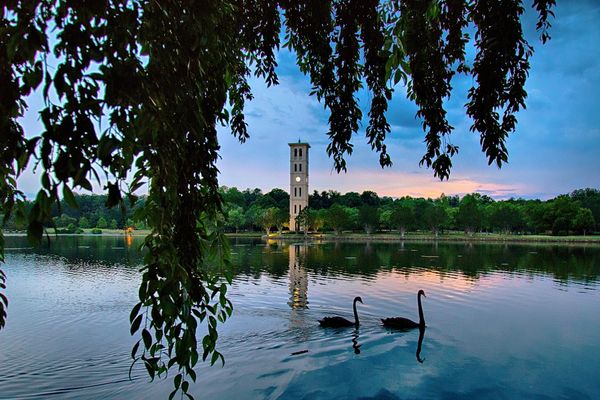Given the recent changes to the Furman lake, such as the previous dredging and the current lower water levels, several components of the wider lake ecosystem have gone under the radar. One component of this system that has attracted students are the waterfowl on campus. Ducks and geese are seen throughout campus and swans accompany the other waterfowl in and around the lake.
David Manning, Superintendent of Grounds and Sports Turf, was able to provide The Paladin with answers to several questions regarding the waterfowl on campus. Manning informed The Paladin that Furman does not purchase its waterfowl and they rely on annual breeding cycles.
The swan babies from the previous year have also given rise to several questions. Manning noted that the swan babies from last year were not part of any university plan or initiative, they were strictly a result of the year's breeding cycle. If the newborn swan babies survive into adulthood they remain in the Furman ecosystem.
In efforts to maintain and ultimately reduce the presence of E. coli in the lake, the grounds team tries to keep the number of waterfowl low, with efforts such as attempting to keep public feeding to a minimum. Finally, Manning highlighted the importance of keeping surrounding lake vegetation up. The vegetation around the lake helps filter runoff and discourages certain waterfowl from using the lake in harmful ways.
Laura Bain, the Associate Director of Sustainability Assessment, provided The Paladin with a history of the lake restoration project, highlighting the places where waterfowl operate in wider campus plans.
A proposal from 2006 to enact a Furman Lake Waterfowl Management Plan stated that "... the waterfowl populations are now so large that they are having a significant negative impact on the ecology and aesthetics of the lake environment." As described in this same document, the appropriate population density for waterfowl is around 2 individuals per acre, and at the time of the document's publishing, the lake ecosystem had 6 times the appropriate density. This 2006 lake restoration proposal was approved and its chief goal, to reduce the population of waterfowl on Furman Lake to 50, was pursued.
A follow-up report on the lake plan was released in 2017, highlighting further goals and possible construction projects. In an effort to restore a more natural level of ecosystem function the Lake Restoration Task Force sponsored three primary initiatives:
Plant vegetation in the lake, on the surrounding border, and along stream channels
Create smaller "rain gardens" between parking lots and the lake
Reduce waterfowl population
The task force also recommended several possible design initiatives, such as as observation deck, bird-watching blind, and a canoe/kayak rental center. Additionally, they raised the idea of building a tram-line that would run along the western boundary of the lake, linking Travelers Rest to Greenville through Furman. It is unclear if these 2017 project recommendations are still being considered.
